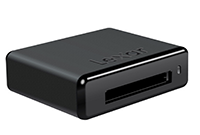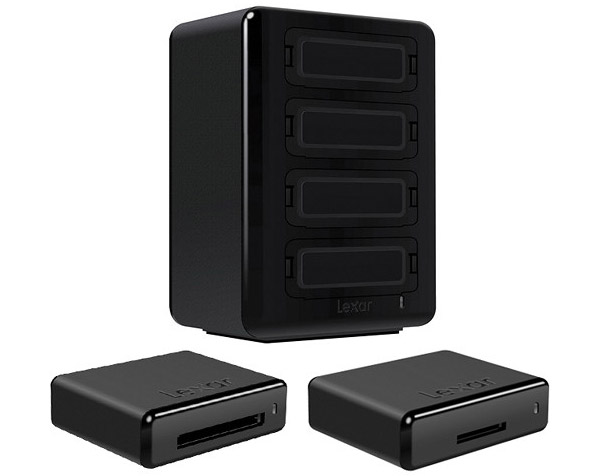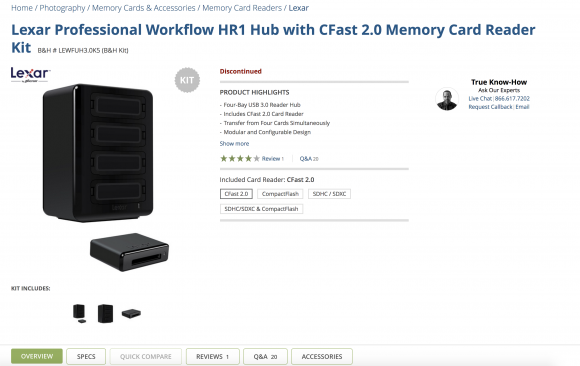Gear story: Loved, lost & coming to terms with life without a trusted brand
posted Wednesday, December 13, 2017 at 12:29 PM EDT

Yesterday, upon getting back home after a cross-country wedding shoot, I noticed something was missing in my bag: my card readers. Lately, I’ve been making a habit of bringing my prized card readers with me on trips in case I need to access something while on the road. It’s not common, but it does happen. Now I’m sitting at my desk a bit lost and confused, as a major part of my editing ecosystem is suddenly missing.
Now you’re probably thinking I’m a little crazy, since a card reader doesn’t really seem all that important and I could probably replace it with a quick trip to Target. Under most circumstances, you’d be right. Most of the time, computers even have the necessary built-in card readers that you would need (I say this chuckling as I look at my dongle-life with the new MacBook Pro). But over the past couple years, I’ve become totally dependent on a brilliant ingestion system that is suddenly just… gone.
Let me back up.
For probably close to three or four years, I’ve been using the Lexar Professional Workflow Hub as my data ingestion tool. The Hub is daisy chained from my G-Speed Studio hard drive to my Apple iMac, and I port in all photos and videos directly into my G-Speed before duplicating all that data onto another hard drive. The Lexar Hub is like the ignition to my sports car that is the rest of my data storage and computer; nothing comes in any other way. The Hub is, in my opinion, the most obvious yet brilliant responses to data management since I’ve been a professional photographer and since using it, my entire process is so much faster and more streamlined than ever before.

The Hub has one main body with four slots, and each of those slots can then take one of many different options. You can add an SSD, a microSD reader (which actually has three readers in it), an SD reader, a CF reader, an XQD reader and, most importantly to me, a CFast reader. All these modular ports can be used independently of the hub, but when they are connected to the hub, they allow you to ingest data at an alarming speed.
I typically ingest one CFast and two SDs simultaneously when I’m emptying cards after a shoot. Instead of having to rely on one reader at a time, I’m doing three. On top of that, the reader allows for lighting fast transfer speeds that maximize the data rates of the cards inside of them. Using a mixture of USB-3 and Thunderbolt 2, it was more than enough bandwidth to pour data into my computer faster than anything else I’d ever used. Raw speed and multi-tasking? I couldn’t have asked for more.
I don’t ingest photos or videos in any other way; this is quite literally 100% of the method I have.
When I went through my luggage after getting home yesterday, I started to panic when I couldn’t find my CFast reader or my primary SD reader. This is my method, and my method was upset.
Frantically, I called my friends to see if they could find the readers, but after hours of looking and nothing showing up, I decided I needed to buy a new one so I could start ingesting footage. I loaded up B&H, and then realized something...

And then it dawned on me: Lexar doesn’t really exist anymore.
My Hub is no longer supported.
There are no more modular card readers being produced, and none being stored by B&H or Amazon.
They’re gone, and my process is in peril.
As you can imagine, this has been weighing heavily on my heart for the past several hours. Not only did it force me to relive the collapse of a company I have loved for years in Lexar, but also serves as a harrowing tale of what happens when a company you love, a company you rely on, stops existing. Support for the products I care about just stops, and what was once an easily-acquired commodity is suddenly rare and precious.
I was talking with a friend of my dad’s recently, and he was recounting how he spent years looking for the air conditioning unit of a classic car he had been restoring for the last 20 years. He was telling me how hard it is to find certain things, and the people who have them may not even know how valuable they are. The parts just sit in a garage or an attic, rusting away and never being appreciated.
You know you’re getting old when those stories start to resonate because something you loved and cherished not only doesn’t exist anymore, but also the company that made it no longer exists either. Sure, Lexar still kind of exists as a brand of an overseas manufacturer, but the Lexar I knew, the Lexar that treated me so well for so many years, and the Lexar that I loved and vehemently defended in the marketplace is gone.
Though I did eventually find a third party reseller on Amazon who had four of these CFast modular readers still in stock, they were of course at an elevated price and absolutely finite in quantity. It didn’t matter to me, I paid the price happily and now eagerly await my new card reader to come in the mail.
After all of what has transpired, I can tell you this much: I’m going to be much more careful of my card reader going forward. It’s too precious to misplace again.